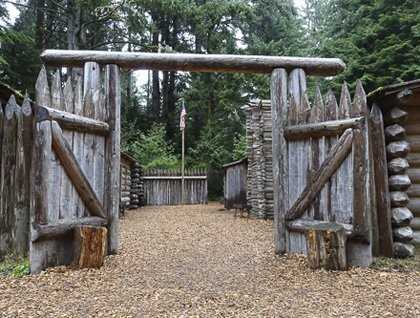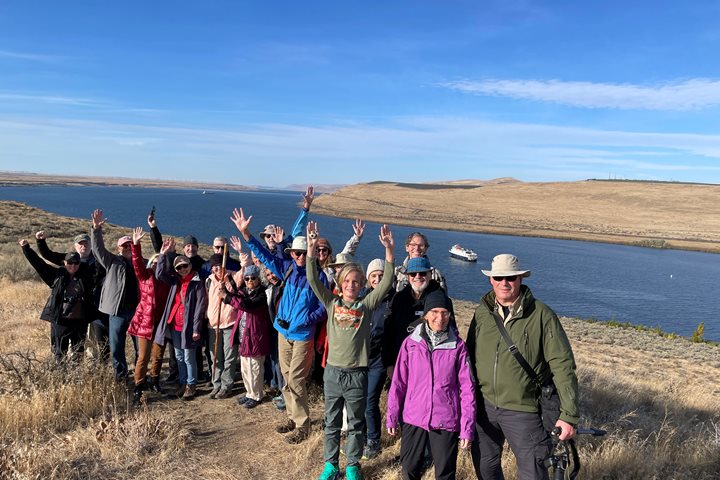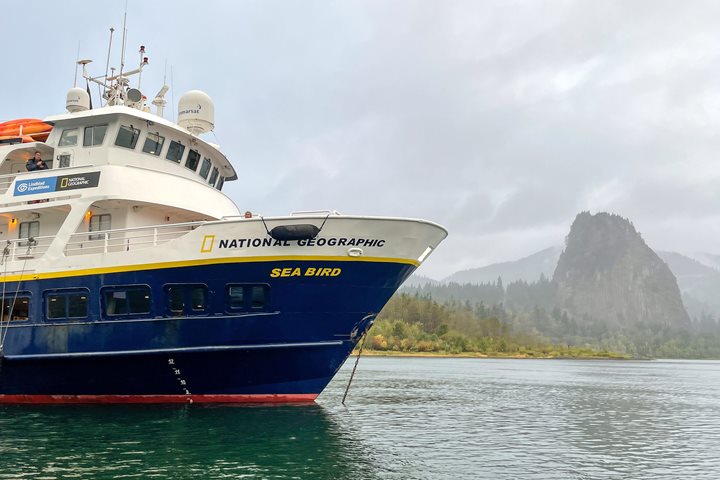As dawn approached, the National Geographic Sea Bird cruised slowly through fog into Astoria, Oregon. It was here that New York businessman John Jacob Aster established a fur trading post in 1811, which in part helped secure an American presence in the Pacific Northwest. Spanish, British, French, and Russian exploring parties were also interested in acquiring this rich territory.
We visited a reconstructed Fort Clatsop, where Lewis and Clark and the Corps of Discovery spent the miserable winter of 1805-06. During the 106 days that they lived there, only on 12 days did it not rain constantly. Their meals consisted primarily of elk and more elk and even more elk. Their clothing rotted and fleas infested everything and everyone. As soon as they had prepared rations for the return voyage, tanned skins, and made hundreds of moccasins, they set out in March. Unlike their horrible weather, our morning fog burned off, and we were treated to a day of glorious sunshine.
From the fort, we returned to Astoria and drove up 600 vertical feet to the 125-foot high Astoria Column, one of 12 historical markers erected in the early 1900s between St. Paul, Minnesota and Astoria. Descending Coxcomb Hill, we stopped at the Columbia River Maritime Museum for a docent-led tour. Here were fabulous displays about the incredible history of the Columbia River, especially happenings near the infamous Columbia River Bar.
In the afternoon, a few of us went kayaking or for a cruise in the expedition landing craft, but most of us joined our historian Don Popejoy for a drive across the 4-mile-long bridge to Washington state and along the coast to Cape Disappointment. This was named by John Meares, British fur trader who sailed near the Columbia River’s mouth in 1788 but failed to find the river’s entrance.
The museum at Cape Disappointment is one of the best Lewis and Clark exhibits that we will visit on our trip. There is a wall depicting the entire Corps of Discovery exploration through paintings, photos, and quotes. Additionally, the interactive part of the museum helps you to understand the travails that the expedition faced. One of the very best things is that there several original items from the corps, including Clark’s pocket knife.







